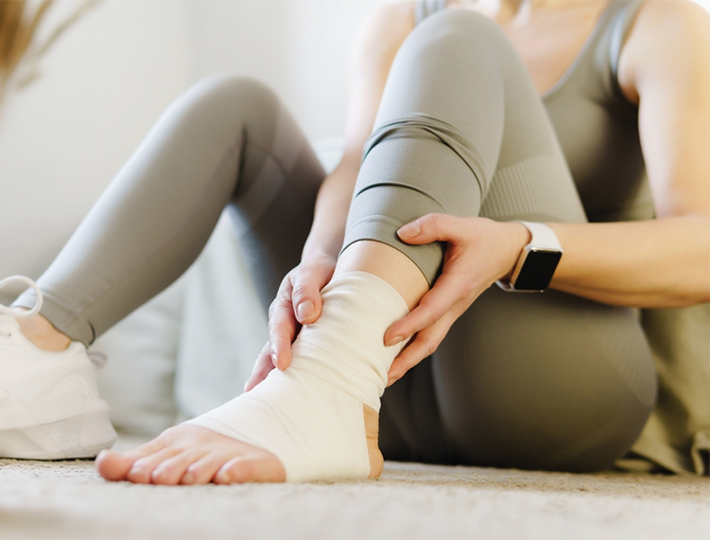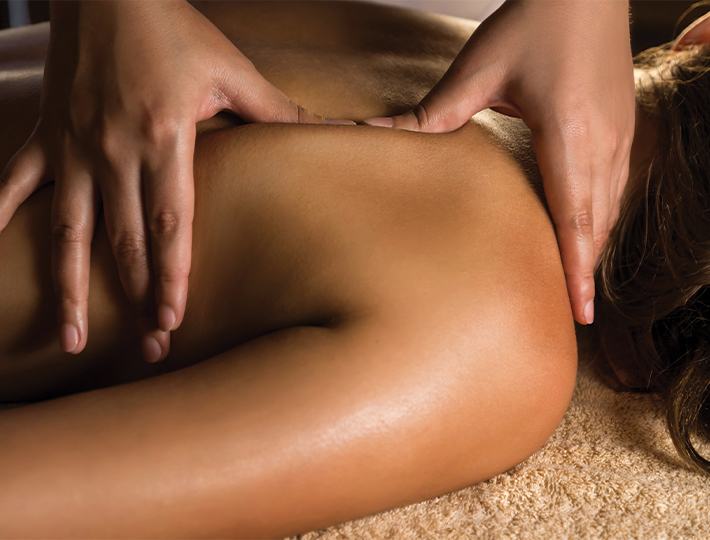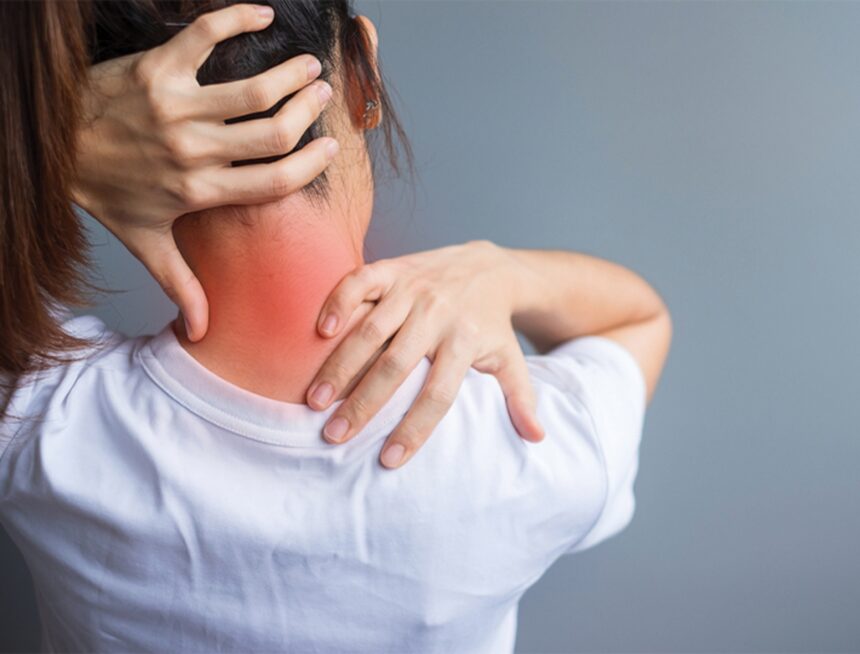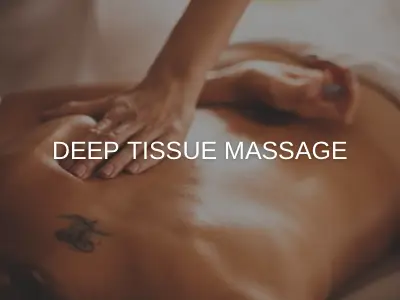Did you know that the back pain you have been experiencing for months after lifting heavy weights or after overdoing exercise following a long break could be a sign of Delayed Onset Muscle Soreness (DOMS)? DOMS is a mild injury that can lead to reduced force capacity, increased painful movement restriction, stiffness, swelling, and dysfunction of adjacent joints. Delayed-onset muscular soreness is a common symptom of overexertion, resulting in microscopic tearing of the muscle fibres.
It is not limited to intense gym workouts but can also occur from activities like standing after a long day of gardening or housework, which are major causes of this condition. In addition to disrupting daily activities, DOMS can temporarily hinder participation in athletic events or practice sessions due to the extent and severity of muscle tears being influenced by the level of soreness experienced.
Various treatment strategies have been developed to alleviate the intensity of DOMS and accelerate muscle recovery. At Tattva Wellness Spa, we firmly believe in the power of massage therapy as an effective treatment for individuals recovering from intense exercise. With careful consideration of timing and specific techniques, massage therapy can yield significant benefits in DOMS management. By facilitating recovery, individuals can continue their training and strive for optimal performance, aligning with our mission to maximize training outcomes through holistic wellness approaches.
Unveiling the Causes and Mechanisms of Muscle Soreness

DOMS is a common phenomenon experienced after engaging in physical exercise, characterised by muscle soreness that typically appears 24-48 hours post-workout. It is caused by microscopic damage to muscle fibres (fibres) and surrounding tissues, primarily resulting from eccentric contractions. These contractions occur when muscles lengthen under tension, such as during the lowering phase of weightlifting or descending stairs. The mechanical stress and strain imposed on the muscle fibres lead to structural disruptions, triggering an inflammatory response that causes soreness, stiffness, and dysfunction of adjacent joints.
Symptoms of Delayed Onset Muscle Soreness
DOMS manifests with several distinctive symptoms. Understanding these symptoms can help individuals recognize and differentiate DOMS from other forms of muscle soreness. The symptoms of DOMS may include:
Muscle Pain: DOMS is characterised by muscle pain that is often described as a dull, aching sensation. The pain is usually localised to the affected muscles and may worsen when the muscles are stretched or contracted. The intensity of the pain can vary depending on the severity of muscle damage.
Stiffness and Reduced Range of Motion: DOMS can cause stiffness in the affected muscles, making movement uncomfortable or difficult. The range of motion in the joints associated with the sore muscles may also be limited. Individuals may experience difficulty in fully extending or flexing the affected muscles.
Swelling and Tenderness: In some cases, DOMS may be accompanied by mild swelling and tenderness in the affected muscles. The muscles may feel tender to the touch or when pressure is applied. The swelling is usually localised and may be more noticeable in severe cases of DOMS.
Weakness and Reduced Muscle Function: DOMS can temporarily reduce muscle strength and impair muscle function. Individuals may experience difficulty performing activities that require the affected muscles, such as lifting heavy objects or climbing stairs. The weakness and reduced muscle function are directly related to the muscle damage and inflammation caused by DOMS.
Massage Techniques for DOMS Relief

Tattva Wellness Spa offers specialised massage techniques to address DOMS effectively. These techniques target specific areas affected by DOMS and promote recovery. Here are two key massage techniques they employ:
Swedish Massage: Swedish massage features long, gliding strokes that induce relaxation and enhance circulation. This technique improves blood flow, delivering vital nutrients to the muscles and removing metabolic waste products. Swedish massage promotes overall healing and contributes to faster recovery. Skilled therapists at Tattva Wellness Spa utilise Swedish massage techniques to address DOMS and promote relaxation. The therapist may vary the pressure and speed of the strokes based on the individual’s comfort and the severity of DOMS.
Deep Tissue Massage: For individuals seeking deeper muscle relief, Tattva Wellness Spa offers deep tissue massage. This technique targets the underlying layers of muscles and connective tissues, releasing tension, alleviating muscle knots, and improving mobility. Deep tissue massage aids in breaking down scar tissue, enhancing muscle function, and promoting recovery. Tattva Wellness Spa’s deep tissue massage is tailored to address DOMS and provide relief from deep muscle soreness. The therapist applies firm pressure and uses slower strokes to reach the deeper layers of muscles.
Signature Tattva Massage- At Tattva Wellness Spa, we have developed our own exceptional approach to sports massage, specifically designed to alleviate DOMS and promote muscle recovery. Our signature Tattva Massage combines stretches, acupressure, and deep tissue techniques to enhance muscle recovery, relieve DOMS symptoms, and foster overall well-being.
How Massage Therapy Helps in DOMS?
Massage therapy plays a crucial role in accelerating DOMS recovery. Tattva Wellness Spa utilises various massage techniques to address DOMS symptoms and facilitate healing.
Here’s how massage therapy can benefit individuals with DOMS:
Enhanced Circulation: Massage therapy improves blood flow, facilitating the removal of metabolic waste products and delivering essential nutrients to the muscles. This increased circulation aids in the healing process and promotes faster recovery. The skilled therapists at Tattva Wellness Spa employ techniques such as long, gliding strokes in Swedish massage to enhance circulation and promote healing. The rhythmic movements of the massage strokes create a pumping effect, stimulating blood flow and lymphatic drainage in the affected muscles.
Anti-inflammatory Effect: Massage has been found to reduce inflammation by suppressing pro-inflammatory cytokines responsible for initiating the inflammatory response in the body. By reducing inflammation, massage therapy helps alleviate the pain and discomfort associated with DOMS. Tattva Wellness Spa’s massage techniques target inflammation reduction to provide relief from DOMS symptoms. The pressure applied during the massage helps to break up adhesions and scar tissue, improving tissue mobility and reducing inflammation.
Relaxation and Well-being: Massage induces a state of relaxation in the body, calming the nervous system and promoting overall well-being. This relaxation response aids in pain relief and helps individuals find relief from their DOMS symptoms. The gentle and rhythmic movements used in massage therapy at Tattva Wellness Spa promote relaxation and a sense of well-being. The release of endorphins during the massage also contributes to a feeling of relaxation and improved mood.
Maximizing the Benefits of Massage Therapy for DOMS Recovery

Massage therapy is commonly used for muscle recovery, but when it comes to addressing Delayed Onset Muscle Soreness (DOMS), precautions are essential. By following key guidelines, you can enhance the effectiveness of massage therapy and promote a faster recovery from DOMS.
- Timing of Massage: It is generally recommended to wait at least 24 to 48 hours after an intense workout before receiving a massage for DOMS. This allows the body’s natural healing processes to take place.
- Communication with the Massage Therapist: Before the massage, communicate with the massage therapist about your specific symptoms, areas of soreness, and any concerns you may have. This will help the therapist tailor the massage techniques to your needs.
- Gentle Massage Techniques: Opt for gentle massage techniques rather than deep tissue or intense pressure. Soft tissue manipulation, effleurage, and kneading can help increase blood flow, reduce muscle tension, and alleviate DOMS symptoms.
- Avoid Direct Pressure on Sore Muscles: Direct pressure on extremely sore or tender muscles may exacerbate the pain. Inform the massage therapist about any areas of extreme discomfort, and they can adjust their techniques accordingly.
- Stay Hydrated: Proper hydration before the massage can support muscle recovery and help flush out any toxins released during the massage.
Additional Approaches for Accelerated Muscle Recovery
Proper muscle recovery is crucial for maximizing performance and minimizing discomfort. By emphasizing nutrition, rest, active recovery, and listening to your body, you can support the healing process, reduce DOMS symptoms, and achieve faster recovery times.
Nutrition for Recovery: Consume a balanced diet rich in lean proteins, complex carbs, and healthy fats. These nutrients support muscle repair and replenish energy stores. Include fruits, vegetables, whole grains, and lean proteins in your diet to aid the recovery process.
Rest and Active Recovery: Allow ample time for rest and sleep to facilitate healing. Incorporate light exercises, stretching, and low-impact activities like swimming or yoga to promote blood flow and muscle relaxation. Active recovery helps flush out waste products, aiding in DOMS relief.
Listening to the Body: Every individual’s exercise tolerance and recovery capacity are unique. Listen to your body and adjust exercise intensity and frequency accordingly. Overtraining increases the risk of DOMS and injuries, so find a balance that works for your fitness level. Modify your routine if you experience excessive fatigue, pain, or prolonged muscle soreness.
Alternative Approaches to Manage DOMS
Apart from massage therapy, there are other therapeutic modalities that may help alleviate DOMS symptoms. These include foam rolling, stretching exercises, hot and cold therapy, compression therapy, and using topical analgesics. Each modality has its benefits and can be used in conjunction with massage therapy or as standalone treatments. Encourage individuals to explore these modalities under the guidance of qualified professionals.
Seek Expert Help for DOMS Management and Faster Recovery
To effectively manage DOMS and promote optimal recovery, it is highly recommended to consult with professionals who specialise in DOMS relief, such as massage therapists, trainers, or physical therapists. These experts can provide personalised advice and guidance based on your specific needs and goals.
Consider scheduling a session at Tattva Wellness Spa, where their skilled therapists are experienced in addressing DOMS symptoms and facilitating healing through specialised massage techniques. Alternatively, seek professional assistance in your local area from trusted practitioners who can offer tailored treatment plans for DOMS management.
Remember, professional guidance and individualised care are crucial in navigating DOMS and achieving a faster recovery. Don’t hesitate to reach out to professionals who can help you on your journey towards alleviating DOMS discomfort and maximising your overall well-being.












Leave a Reply